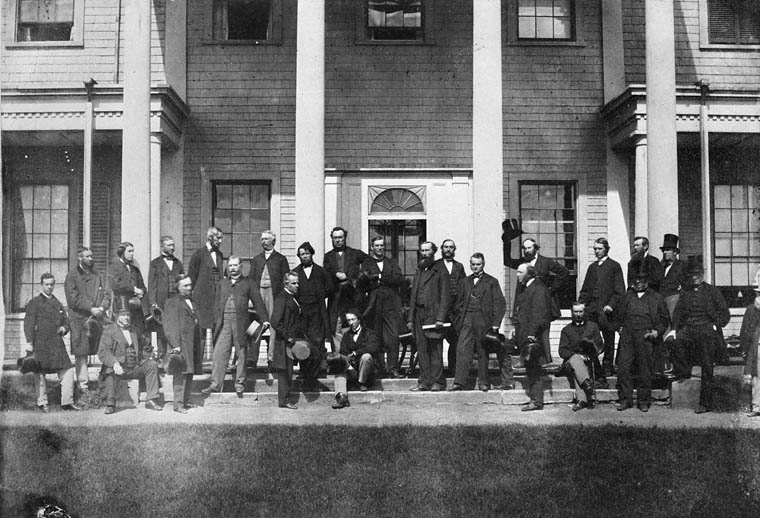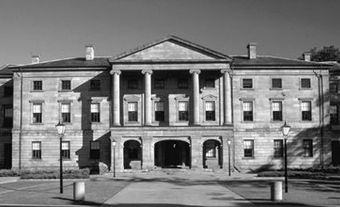The British North America Act (BNA Act) created the Dominion of Canada. The Act was passed by the British Parliament on 29 March 1867. It came into effect on 1 July 1867. The Act is the foundation of Canada’s Constitution. It outlines how governments in Canada are to be structured. It also says which powers are given to Parliament and to the provinces. The BNA Act was renamed the Constitution Act, 1867 in 1982. This took place when the Constitution was patriated (taken back) from Britain.
(This article is a plain-language summary of the Constitution Act, 1867. If you are interested in reading about this topic in more depth, please see our full-length entry, Constitution Act, 1867.)

Constitution of Canada
The Constitution Act, 1867 does not make up all of the Constitution of Canada. It also has unwritten rules known as constitutional conventions. Many British and Canadian laws are also part of it. One example is the Statute of Westminster, 1931.
Confederation
The BNA Act was passed by the British Parliament on 29 March 1867. It came into effect on 1 July 1867. That day is now known as Canada Day. The Act united three of the five British North American colonies. They became a federal state with a British parliamentary system. The three colonies were Nova Scotia, New Brunswick and the Province of Canada. The latter was divided into Ontario and Quebec.
Later additions to Confederation:
- Northwest Territories (1870)
- Manitoba(1870)
- British Columbia(1871)
- Prince Edward Island (1873)
- Yukon (1898)
- Alberta (1905)
- Saskatchewan(1905)
- Newfoundland and Labrador(1949)
- Nunavut (1999).

Division of Powers
The Act outlines how powers are split between Parliament and the provinces. It gives the federal government power over areas such as banking; criminal law; the postal system; the armed forces; and “Indians and Lands reserved for the Indians.” (See Indian Act.) It gives the provinces power over areas such as property; most contracts and torts; and local works and businesses. If there is a conflict or overlap, federal law prevails.
New fields are given to the federal government. Parliament also has power over things that fall under “national dimensions” and “emergencies.” (See War Measures Act; Emergencies Act.) In wartime, for example, all provincial powers may come under federal control.
The US constitution treats all states as equal. But the Constitution Act, 1867 does not suggest that all provinces are equal.
Patriation of the Constitution
The BNA Act did not include a method for Canada to change it without Britain’s consent. This led to a crisis in 1980. Prime Minister Pierre Trudeau tried to patriate the Constitution (take control of it) from Britain. He tried to do so without the consent of the provinces. In 1981, the Supreme Court of Canada ruled that this could not be done. (See Patriation Reference.)
The constitution was finally patriated on 17 April 1982. It included the Charter of Rights and Freedoms. It became an important part of the Constitution.

See also Confederation (Plain-Language Summary); Constitution of Canada (Plain-Language Summary); Statute of Westminster, 1931 (Plain-Language Summary); Constitution Act, 1982 (Plain-Language Summary); Canadian Charter of Rights and Freedoms (Plain-Language Summary); Patriation of the Constitution (Plain-Language Summary).

 Share on Facebook
Share on Facebook Share on X
Share on X Share by Email
Share by Email Share on Google Classroom
Share on Google Classroom






